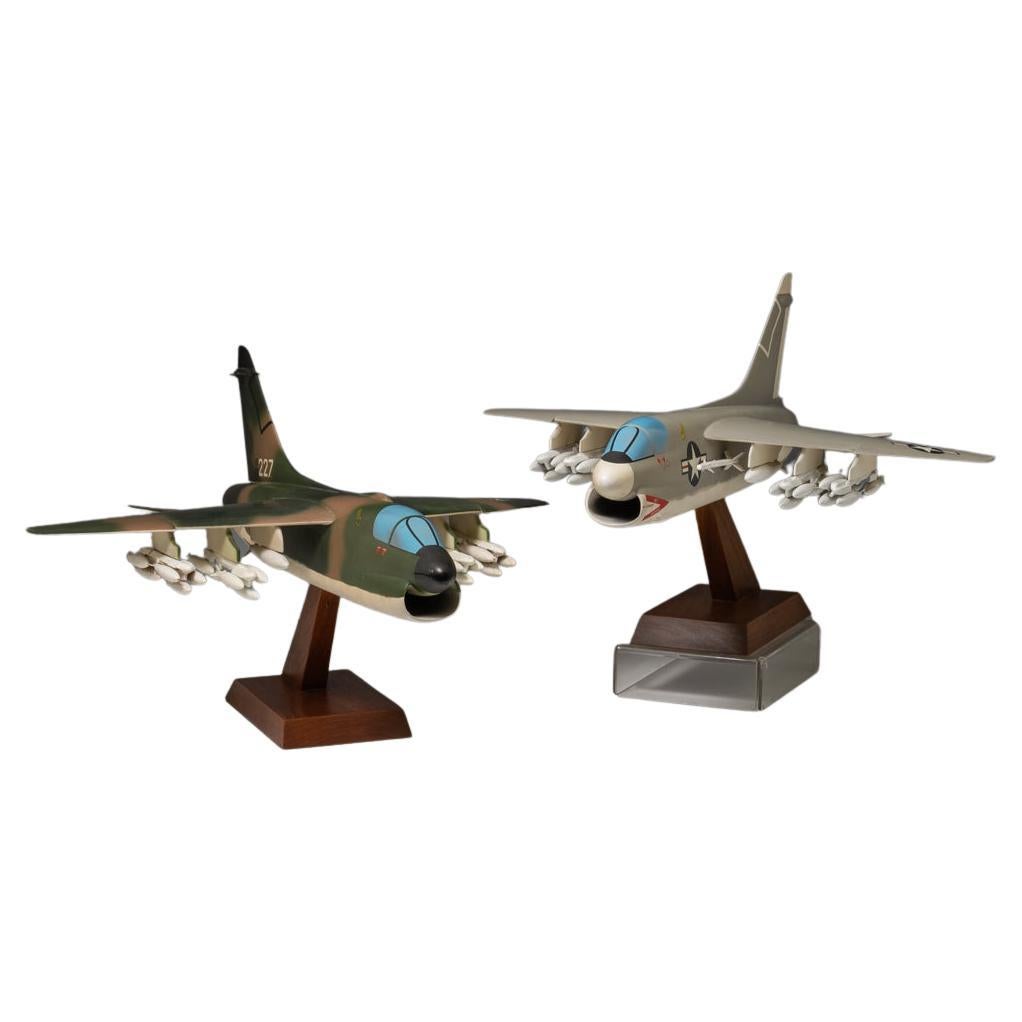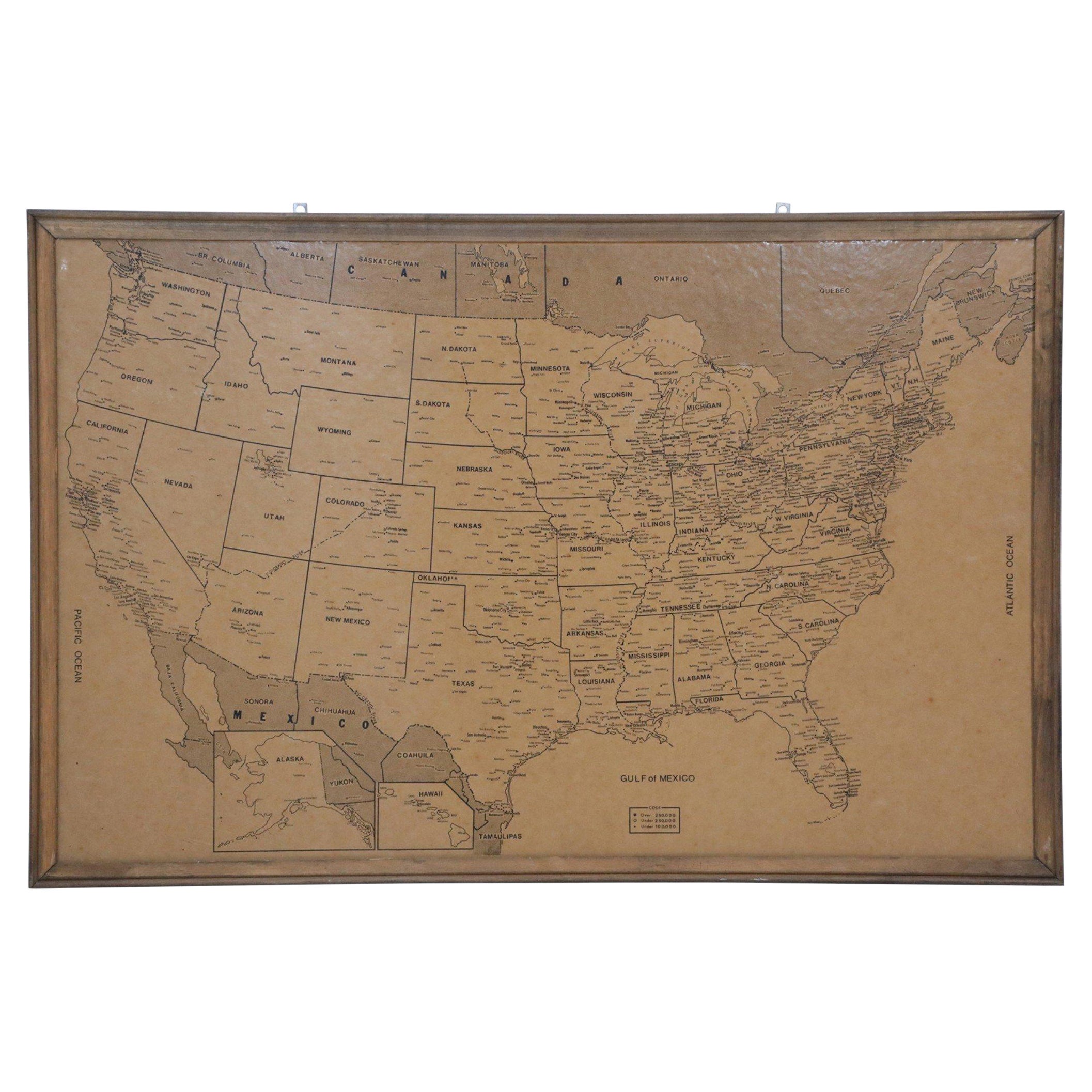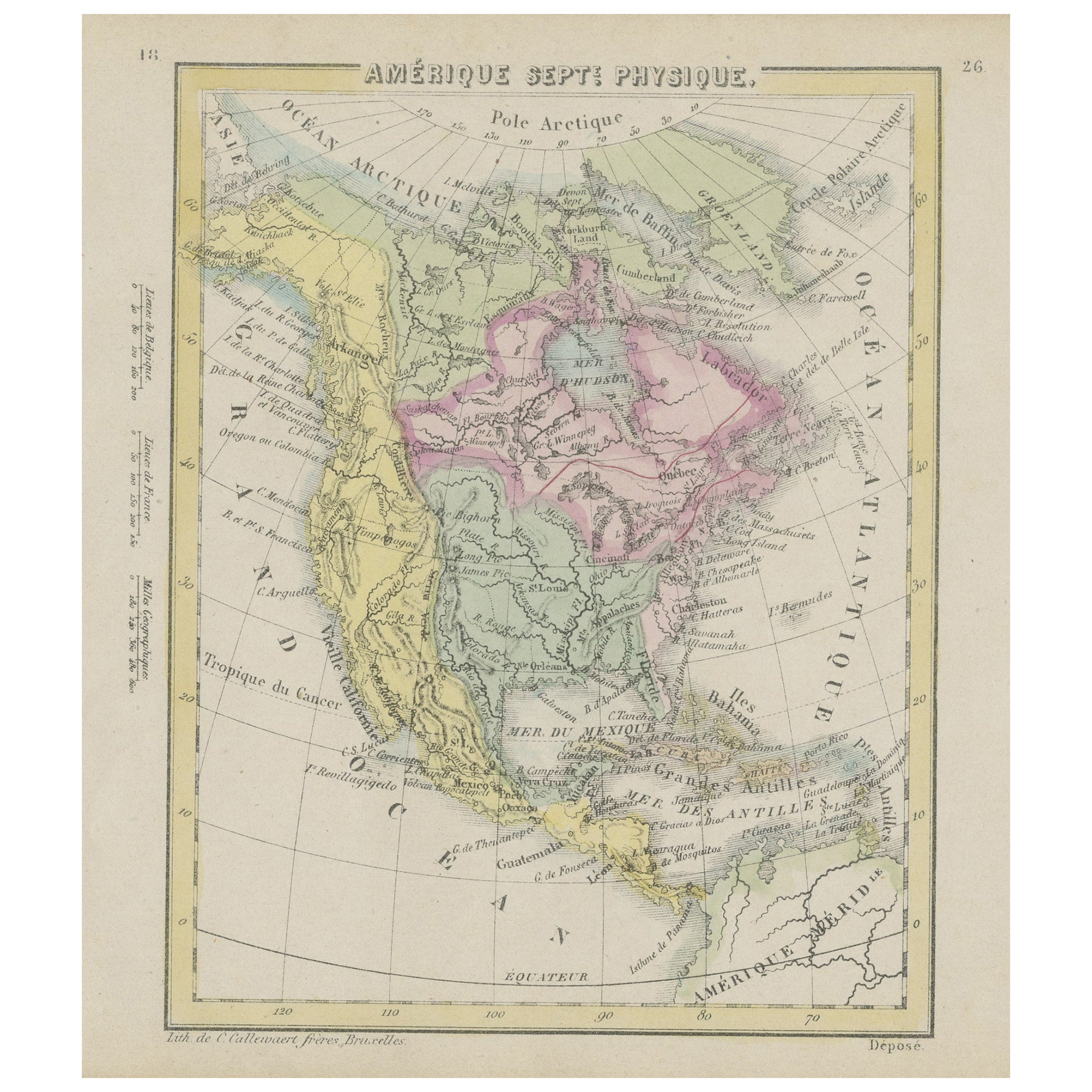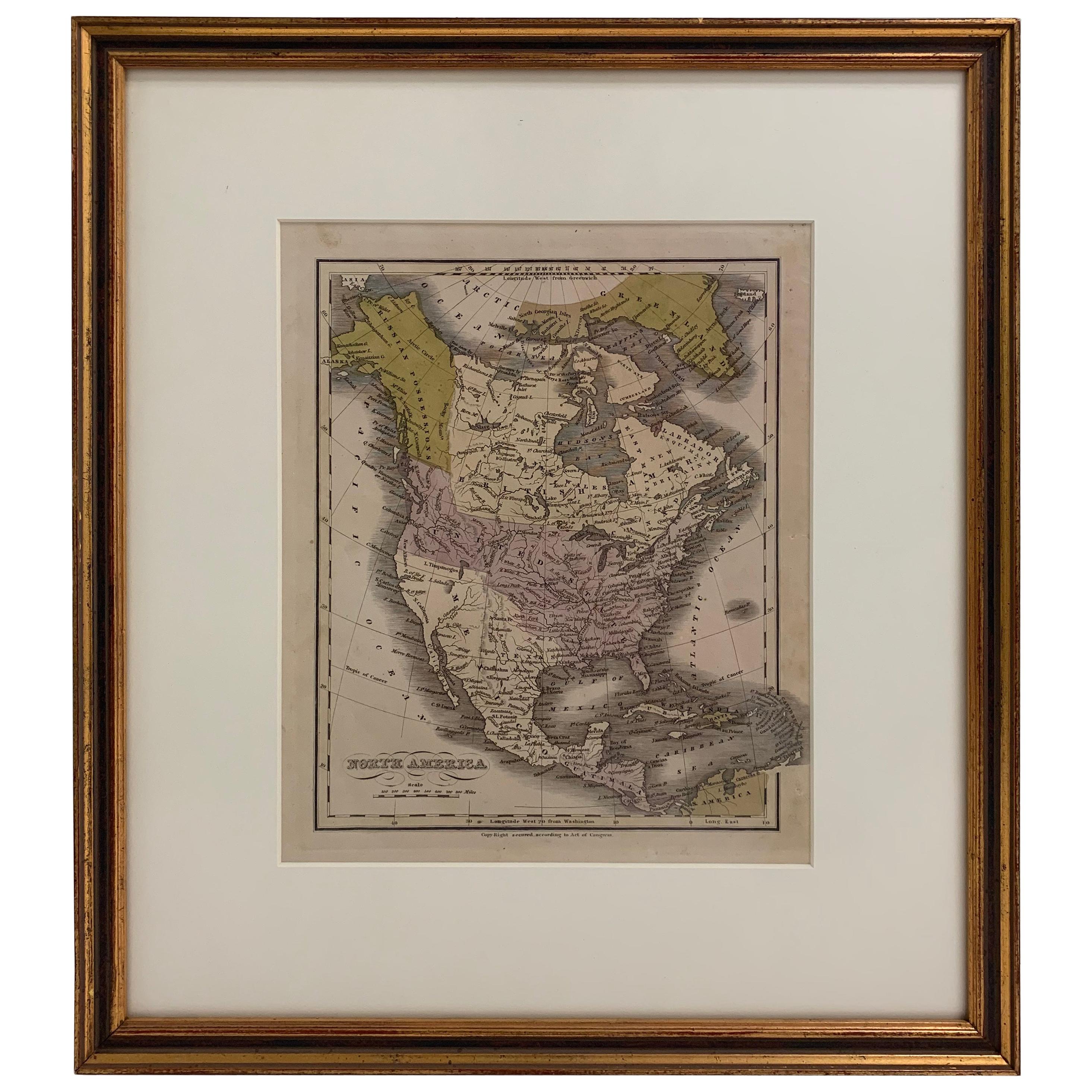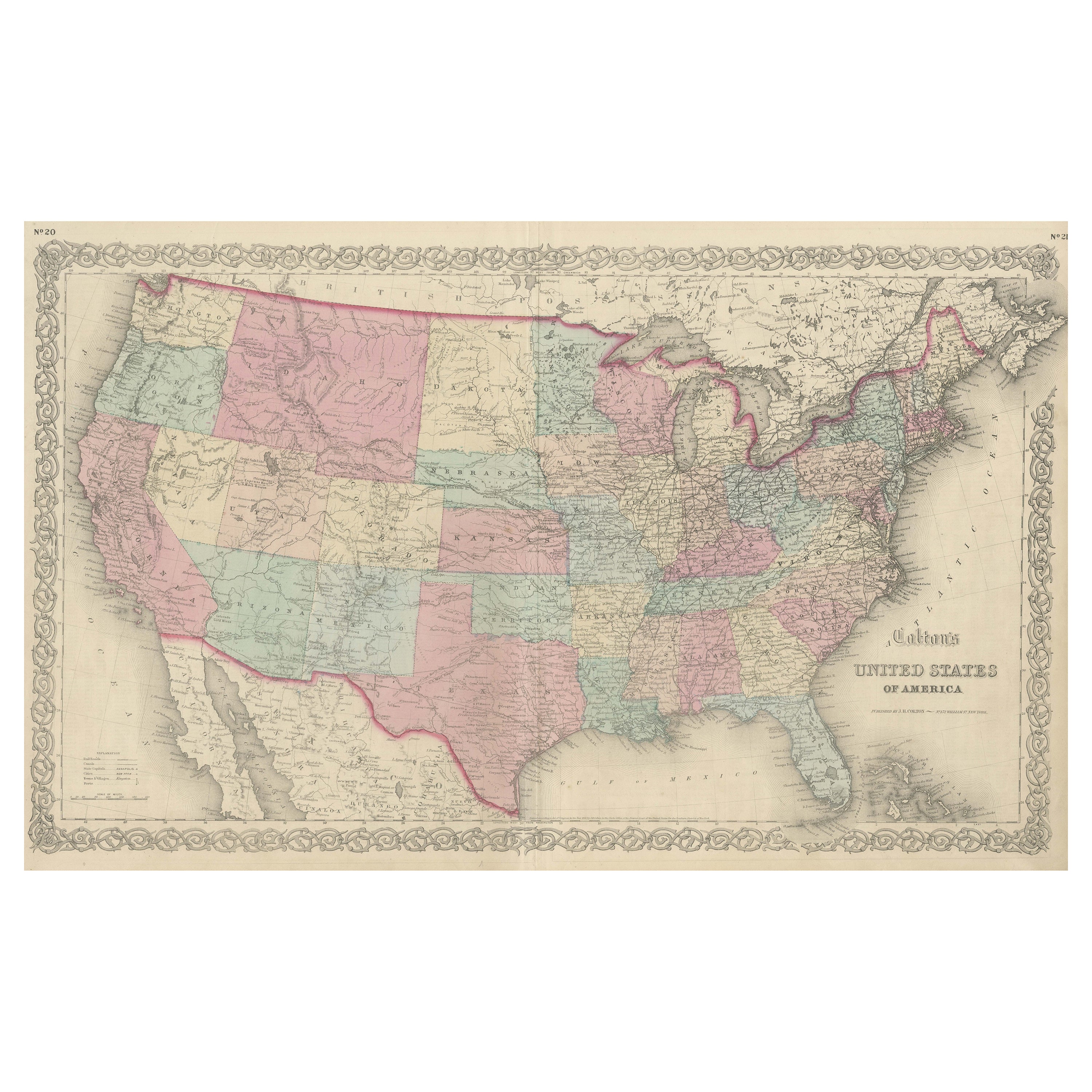Items Similar to 5 Pc Mid Century United States Military Pants Jackets Vietnam USMC
Want more images or videos?
Request additional images or videos from the seller
1 of 13
5 Pc Mid Century United States Military Pants Jackets Vietnam USMC
About the Item
Lot of 5 pieces of vintage Vietnam War era United States military clothing - two jackets and three pairs of pants. USMC United States Marine Corps Alpha Service dress uniform jacket, size 38R. Green uniform jacket labeled The Cadet Store - West Point. 100% Katoen tactical /combat pants (like new), button fly. Winter weight wool cargo pants, Alois Heiss K.G. Jun 1964, button fly. Front flap / button fly cotton twill/canvas trousers / pants with belt.
Dimensions:
Jacket 1: Shoulders - 18.5" / Arm - 24" / Chest - 35" / Back Length - 31" / Jacket 2: Shoulders - 17.5" / Arm - 26.5" / Chest - 36" / Back Length - 31" / Pants 1: Waist - 34" / Inseam - 29" / Pants 2: Waist - 36" / Inseam - 34" / Pants 3: Waist - 34" / Inseam - 29"
- Dimensions:Height: 31 in (78.74 cm)Width: 24 in (60.96 cm)Depth: 0.5 in (1.27 cm)
- Sold As:Set of 5
- Materials and Techniques:
- Period:
- Date of Manufacture:Mid 20th Century
- Condition:Wear consistent with age and use. Good Overall - Gentle wear; some missing buttons.
- Seller Location:Dayton, OH
- Reference Number:
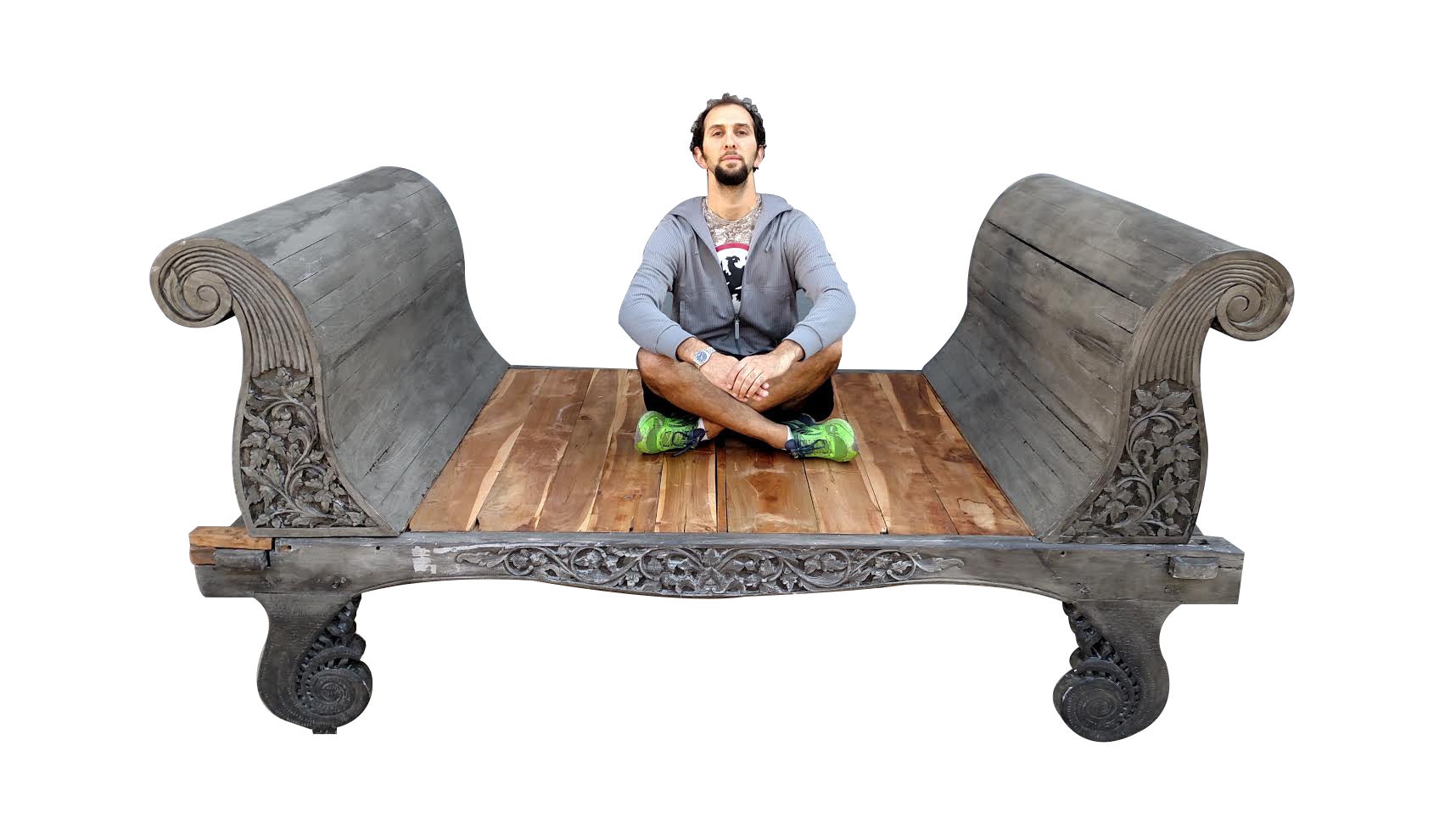
About the Seller
4.9
Platinum Seller
These expertly vetted sellers are 1stDibs' most experienced sellers and are rated highest by our customers.
Established in 2010
1stDibs seller since 2020
1,113 sales on 1stDibs
Typical response time: <1 hour
- ShippingRetrieving quote...Ships From: Dayton, OH
- Return PolicyA return for this item may be initiated within 2 days of delivery.
More From This SellerView All
- 3 Pc Mid Century US Navy Blue Wool Uniform Jumper Pants Cracker JackLocated in Dayton, OH3 piece set of vintage pre-Vietnam "Cracker Jack" style United States Navy blue wool uniform shirts / jumpers and pants. Pants feature straight leg with full button front flap / fly....Category
Mid-20th Century Historical Memorabilia
MaterialsWool
- Rare Monumental 1890 Antique 42 Star United States of America FlagLocated in Dayton, OHMonumental fifteen foot 42 star American flag, circa 1889-1890. The 42-star flag is rare because only a limited number of 42-star flags were produced after Washington became a state on Nov. 11, 1889. But it takes a more intimate knowledge of flag trivia to know just why it happened this way. White stars are added to the blue field of the star-spangled banner on the Fourth of July after a state is admitted to the union. In the fall of 1889, several western territories became states. Dakota was admitted, and then split into North and South Dakota, on Nov. 2, 1889, which made them state and star numbers 39 and 40. Montana was named the 41st state on Nov. 8, followed by Washington, on Nov. 11. Only a few flag manufacturers began producing 42-star flags before the official addition of the 42nd star on July 4, 1890. Those who tried to jump the gun by being the first to produce an up-to-date flag were surprised when Idaho was admitted to the United States on July 3...Category
Antique 1890s American Classical Historical Memorabilia
MaterialsCotton
- Antique 46 Star WMH Horstmann Company United States of America Flag 83"By HorstmannLocated in Dayton, OHAntique forty six star large wool American flag by Horstmann Company, circa 1908-1912. Horstmann firm was founded by William H. Horstmann (1785-1850), who had immigrated to Philadelphia from Germany. Horstmann bought out a local swordmaker in 1828 and thereafter entered the military goods field. The firm benefitted from the Civil War, becoming the largest military goods supplier in the nation by 1864. WILLIAM H. HORSTMANN & SONS, Manufacturers of Dress Trimmings and Military Goods. 5th & Cherry Streets, Philadelphia, PA. This house was founded, in 1815, by William H. Horstmann, a native of Cassel, in Germany. He had learned the trade of silk-weaving in France, and, emigrating to the United States in the above-mentioned year, established himself in Philadelphia as a manufacturer of fringe, laces and trimmings of various kinds. He married the daughter of Frederick Hoeckly, a German settler in Philadelphia, and also a manufacturer of fringe, coach-lace and tassels. He devised several improvements in this trade, especially by introducing varieties in the styles and patterns of this class of goods, there being at that time only two patterns used in the trade, which were known as the Jefferson pattern and the Monroe pattern. In 1824, he introduced into this country from Germany the use of plaiting or braiding machines, and about the same time he was the first to introduce into this country the use of the Jacquard loom, for weaving patterns in textile fabrics. His location was in the first instance at No. 50 North Third street, but within a short time he removed to a store next to the Harp and Crown tavern, afterwards known as the City hotel, and continued his business within a short distance of this point for many years. In 1828, he commenced the manufacture of military trimmings as a special department, and this branch has grown to most important proportions, Horstmann's military goods being in demand throughout time country. The firm have also executed large Government contracts in this line for the War and Navy Departments. In 1831, he established a branch house in New York city, and about the same time erected a factory at the corner of Germantown road and Columbia avenue. The factory was continued here until time erection of the extensive building at Fifth and Cherry streets, where the works, salesrooms and offices of time firm now are. This massive structure is six stories high, and extends 140 feet on Fifth street and 200 on Cherry street, and reaches back to Race street. The separate departments into which the business is divided are thirty in number. More than 1000 distinct looms and machines are in use in the building, many of them very costly and some invented and used exclusively by this firm, the motive power being supplied by a steam engine of fifty horse power. The area covered by the works is about 11,000 square feet. Time number of hands employed is very large, about 500. When the erection of a vast factory at this point was first proposed, a strong opposition was made by time holders of the neighboring property. The ancient German Lutheran Church and burying ground, since removed, stood opposite the site, and a bill was introduced into the Legislature to forbid the use of a steam engine within 100 yards of any place of worship. The interests which such a bill would have affected injuriously, especially those of several newspapers, roused a strong opposition to it, and it failed to become a law. In 1845, William H. Horstmann, the founder of the house, retired from the business, and his two sons, William and Sigmund, assumed the management and it was under their direction that the new building, above described, was erected. The goods produced by this house are of almost endless extent and variety. They include goods woven from all the various textile fibres—cotton, wool, silk, etc.—in every style, color and pattern, and are used for an infinite number of purposes. Narrow woven goods are time staple production, made up into material for dresses for both sexes, for use in daily life, and for regalia for ""societies;"" for the costumes of the stage, the upholstering of houses and of carriages, the uniforms of soldiers, together with equipments for the same, and for funeral purposes. The raw material used in the manufacture is to a great extent very costly, and their store rooms often hold as much as $200,000 worth of goods in an unworked state. There are two rooms devoted to power looms in the factory, one for coach lace and one for other styles of weaving, in which about 250 of these machines are constantly running. The braiding machines in the coach lace room are very noteworthy. The cord to be covered with braid is drawn through an opening in time middle of a flat, circular, metallic plate, about 15 inches across. Up to a point on this cord, about a foot above the plate, the threads of the braiding material converge, like the ribs of a tent-roof, and there weave in and out and out and in, as the coating of braid grows, and time covered cord rises and is wound away above. The weaving is accomplished by the motion of the spools below that carry the different threads of the braid. These spools stand in uprights, which are carried round and amongst each other in curved slots in the above-mentioned broad metallic plate. All but two of these spools run in and out among each other, with a swift, easy and intricate motion, mind so rapid that time eye can hardly follow it, while one or two special spools run steadily round and round among time twisting spools with the most extreme swiftness. Many other machines, displaying equally ingenious mechanism, are used in the factory. The various details of equipment manufactured and supplied by this house are also important, both for their number and the superior quality of the manufacture. The one article of swords may be taken as an instance. This trade grew naturally and immediately out of the established army and navy goods department of the works, it being necessary that the sword itself should be furnished together with the sword-belt and other trappings all complete. Every part of the sword and trappings, with the exception of the blade, is made on the premises. The blades are almost all imported from the ancient German sword-blade emporium of Solingen, where, it is said, swords have been made ever since the year 1147, when Count Adolphus of Berg brought home from the East and established there the business of forging Damascus blades. There is in this department a stock of some thousands of blades, of many different patterns and sizes, ready to be set and finished. Any style or sword can be had from this warehouse, from the plainest kind up to a presentation sword...Category
Vintage 1910s American Classical Political and Patriotic Memorabilia
MaterialsWool
- Antique 1844 J Calvin Smith JH Colton Midwest United States Survey Map 27"By J.H. ColtonLocated in Dayton, OHAntique framed black and white map of seven Midwestern American states. Guide Through Ohio, Michigan, Indiana, Illinois, Missouri, Wisco...Category
Antique 1840s Maps
MaterialsPaper
- Massive 300+ Pc Lot Vintage Dollhouse Miniature Furniture Toys AccessoriesLocated in Dayton, OHA large extensive / impressive lot of 334 pieces of dollhouse furniture and miniatures. Mixture of handmade and store bought / kit made items. Variety of materials and levels of wear...Category
20th Century Toys and Dolls
MaterialsMetal
- Vintage Czechoslovakian Brass Army Military Boy Scout Bugle Trumpet HornLocated in Dayton, OHVintage military / boy scouts style brass bugle, made in Czechoslovakia. Measure: 17".Category
Late 20th Century Musical Instruments
MaterialsBrass
You May Also Like
- Pair of United States Military A-7 Corsairs Model Fighter Jet AirplanesBy Matthijs VerkuylLocated in London, GBAn unusual pair of painted aluminium and wood military models of the LTV ( Ling-Temco-Vought) A-7 Corsair II fighter jet airplanes. One in United States Navy (USN) livery and one in United States Air Force camouflage livery. Made by a celebrated Dutch model maker, Maarten Matthijs Verkuyl, a specialist model maker that had contracts with aircraft manufacturers and airlines. Fabulous quality painted cast aluminium military naval and airforce model aircraft...Category
Vintage 1970s Dutch Aviation Objects
MaterialsAluminum
- S.S. United States ThermometerLocated in Hanover, MAVintage SS United States Thermometer by the British Rototherm Co. Ltd. London, England About 4.75" high and 5.25" wide. This table/desk top thermometer is in a leather clad wood case...Category
Vintage 1950s British Mid-Century Modern Nautical Objects
MaterialsLeather
- Vintage Framed United States MapLocated in New York, NYVintage aged paper map of the United States mounted on particle board and framed in a simple wooden frame.Category
20th Century American Mid-Century Modern Maps
MaterialsWood, Paper
- Small Map of the United StatesLocated in Langweer, NLAntique map titled 'Amérique septe. Physique'. Small map of the United States. lithographed by C. Callewaert brothers in Brussels circa 1870.Category
Antique Mid-19th Century Maps
MaterialsPaper
- 1830 Mexico and United States Framed MapLocated in Stamford, CTMap of North America published circa 1830. Map shows United States into Canada. Mexico extending into the upper California territory. Texas appears in name but prior to the period of...Category
Antique 1830s American American Classical Maps
MaterialsGlass, Wood, Paper
- Antique Map Colton's United States of AmericaLocated in Langweer, NLAntique map titled 'Colton's United States of America'. Show railroads, canals, state capitals, major cities and towns, military posts, historic trails, Pony Express and U.S. mail routes; Dakota [Territory] extending deep into Nebraska, and Idaho [Territory] encompassing [modern day] Montana and Wyoming; Indian Territory...Category
Antique Mid-19th Century Maps
MaterialsPaper
Recently Viewed
View AllMore Ways To Browse
Crystal Palace Memorabilia
Brooke Cadwallader
Documents From American Revolutionary War
Classical Music Memorabilia
Sterling Parade Saddle
Vintage Parade Saddle
Vintage Parade Saddles
Antique Brass Cash Registers
Antique Mercury Glass Tree Topper
Autograph Michael Jackson
Barrow Hepburn
Bastoni Da Passeggio Vintage
English Cordite Bucket
Geoff Hunt
Historical Letter Einstein
Jk Rowling
Lindy 20
Mercury Glass Tree Topper
